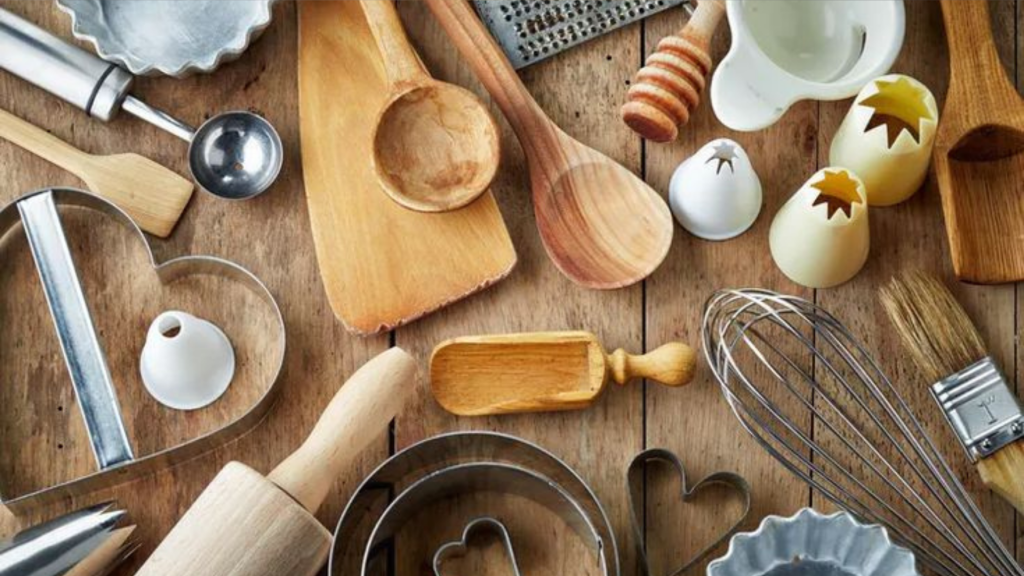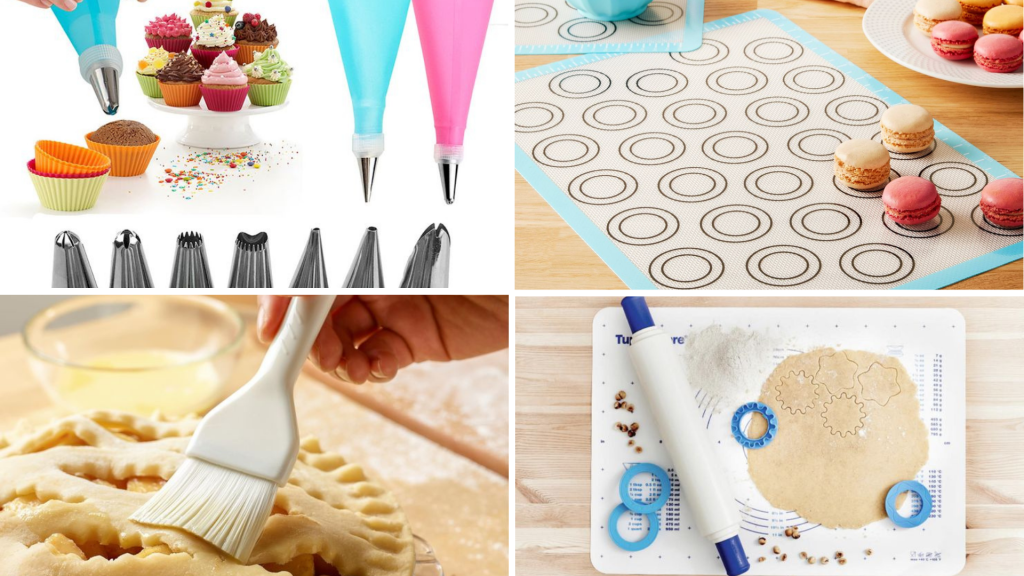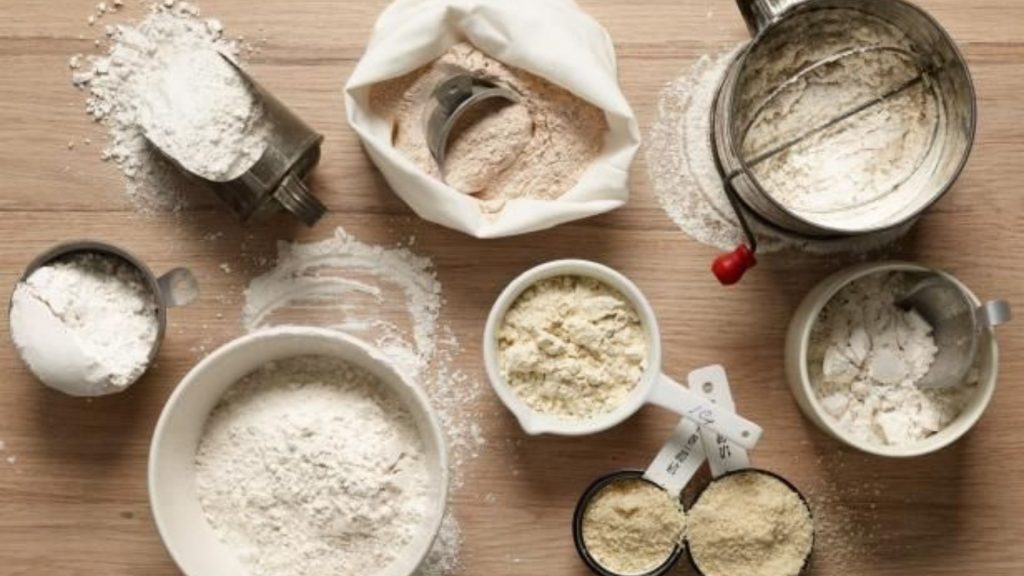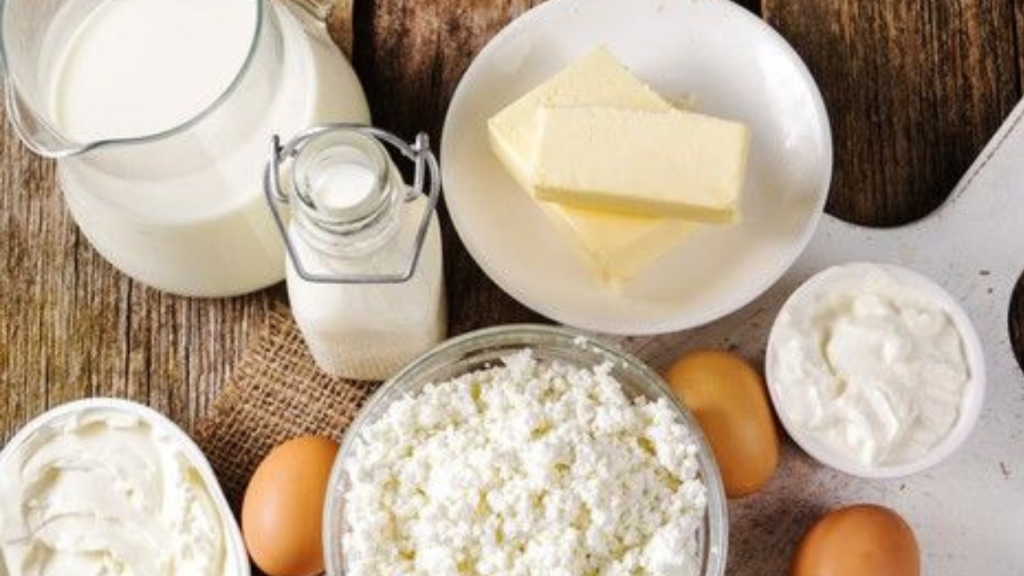Flour on your face, butter on your hands, and the sweet aroma of cookies in the air, that’s the joy of baking, and it’s easier than you think. If you’ve ever burnt a batch or watched a cake collapse, don’t worry, every great baker started somewhere. This guide will walk you through the essentials, the right tools, simple techniques, and beginner friendly recipes to help you bake with confidence.
Understanding Baking Basics
- Baking is more than just mixing ingredients, it’s a blend of art and science. At its core, baking is the process of using dry heat, usually in an oven, to transform simple ingredients like flour, sugar, eggs, and butter into something magical. The science lies in precision, the right measurements, temperature, and timing can turn a sticky dough into a soft, golden loaf or a fluffy cake.
- Unlike cooking, which often allows you to “taste and adjust” as you go, baking demands accuracy and patience. You can’t add more sugar after the cake is in the oven or change the temperature midway without affecting the result. That’s what makes baking so rewarding, once you understand the rules, you can create consistently perfect treats every time.
- Baking is a skill anyone can learn. You don’t need professional tools or years of experience, just a willingness to try. With each bake, you will grow more confident, and soon those once intimidating recipes will feel like second nature.
Essential Baking Tools & Equipment
1. Must Have Tools

- Measuring Cups and Spoons: Precision is everything in baking. Always measure ingredients accurately for consistent results.
- Mixing Bowls: Keep a few in different sizes for mixing wet and dry ingredients separately.
- Spatula and Whisk: A rubber spatula helps you scrape every bit of batter, while a whisk blends ingredients smoothly.
- Hand Mixer (or Whisk): Perfect for whipping cream, beating eggs, and mixing batters without much effort.
- Baking Trays and Pans: A round cake tin, a muffin tray, and a flat cookie sheet will cover most beginner recipes.
- Parchment Paper: Prevents sticking and makes cleanup a breeze.
- Cooling Rack: Allows baked goods to cool evenly and prevents sogginess.
- Oven thermometer: Helps you check your oven’s true temperature, essential for perfect bakes every time.
2. Nice to Have Extras

Once you’re comfortable with the basics, these tools can make baking even more fun and efficient
- Stand Mixer: Great for kneading doughs and whipping large batches effortlessly.
- Piping Bags and Nozzles: For decorating cupcakes, cookies, or cakes beautifully.
- Silicon Baking Mats: A reusable alternative to parchment paper that ensures even baking.
- Pastry Brush: Handy for glazing pastries or brushing melted butter and egg wash.
- Rolling Pin and Cookies Cutter: Ideal for making cookies, pies, and other shaped dough treats.
Key Ingredients You Should Know
Every great bake starts with a handful of simple ingredients, flour, sugar, butter, eggs, and a little magic from your oven. But the secret to becoming a confident baker lies in understanding what each ingredient does.
1. Flour Types & Their Functions

- All Purpose Flour: You go for cakes, cookies, and muffins.
- Bread Flour: Contains more protein (gluten) for chewy, airy loaves.
- Cake Flour: Lighter and softer, ideal for fluffy cakes and cupcakes.
- Whole Wheat Flour: Adds a nutty flavor and dense texture, best for hearty breads or muffins.
2. Sugars & Sweeteners

- Granulated Sugar: Common in most recipes, helps with even browning.
- Brown Sugar: Adds moisture and a caramel like flavor to cookies and cakes.
- Powdered Sugar: Used for icings and frostings because it dissolves easily.
- Honey or Maple Syrup: Natural sweeteners that add depth and softness.
3. Fats (Butter, Oil, Margarine)

- Butter: Adds the best flavor, and helps with flaky layers.
- Oil: Keeps cakes and muffins moist for longer.
- Margarine or Shortening: Useful for dairy free recipes and crumbly pastries.
4. Leavening Agents (Baking Soda, Baking Powder, Yeast)

- Baking Soda: Needs an acid (like lemon juice or yogurt) to activate.
- Baking Powder: A ready to use leavener that works with or without acid.
- Yeast: The live leaving agent, great for bread and dough recipes that need time to rise.
5. Eggs, Dairy, and Flavorings

- Eggs: Bind ingredients, provide structure, and help with rise.
- Milk, Yogurt, or Cream: Add moisture and a soft crumb texture.
- Flavorings: Vanilla extract, cocoa powder, citrus zest, and spices elevate your baked goods with delicious aroma and depth.
Mastering Baking Techniques
Baking is both a science and art. While recipes guide you, understanding the why behind each step helps you bake smarter and more confidently.
1. Measuring Accurately (Weight vs Volume)
- Weighing Ingredients: Using a kitchen scale is the most accurate method. It ensures consistency every time.
- Volume Measuring: If you’re using cups and spoons, level them off properly, no heaping scoops.
2. Mixing Methods (Creaming, Folding, Whisking)
- Creaming: Beating butter and sugar together traps air, giving cakes a light, fluffy texture.
- Folding: Gently combine airy mixtures like whipped egg whites with batter to keep them light.
- Whisking: Adds air and volume to eggs, cream, or batter, perfect for sponges and meringues.
3. Understanding Oven Temperatures
- Preheating is Essential: Always preheat your oven before baking to ensure even rising.
- Know Your Oven’s Hot Spots: Use an oven thermometer to check accuracy.
- Middle Rack Rule: Most baked goods cook best on the middle rack for even heat circulation.
4. Cooling & Storing Baked Goods
- Cooling: Place baked goods on a wire rack to prevent sogginess from trapped steam.
- Storage: Keep cookies in airtight containers, cakes covered at room temperature, and bread wrapped in cloth or foil to maintain freshness.
- Freezing: Many bakes (like cookies or muffins) freeze beautifully, just let them cool completely first.
5. Troubleshooting Common Mistakes
- Flat Cake: Check if your baking powder or soda is fresh and avoid overmixing.
- Burnt Edges: Your oven may be too hot, use an oven thermometer or move the rack to the middle.
- Dense Texture: You may have added too much flour or not enough air during mixing.
- Dry Bakes: Try reducing baking times slightly or check if your oven temperature is accurate.
- Cookies Spread Too Much: Chill your dough before baking and use parchment paper instead of greasing the tray.
Beginner Friendly baking Recipes to Start With
The best way to learn baking is to start baking! These simple, foolproof recipes are perfect for beginners, minimal ingredients, easy steps, and guaranteed delicious results. Each one teaches you a basic technique that will build your confidence for more advanced bakes later.
1. Classic Chocolate Chip Cookies

Everyone’s favorite starting point! Soft in the middle, crisp on the edges, and loaded with gooey chocolate chips.
- Why it’s great for beginners: You’ll learn how to cream butter and sugar, measure ingredients accurately, and get comfortable with baking times.
- Pro Tip: Chill your dough for 15-30 minutes before baking, it helps your cookies hold their shape and develop richer flavor.
2. Vanilla Sponge Cake or Banana Bread

- Why it’s great for beginners: You’ll practice mixing wet and dry ingredients, using leavening agents, and checking for doneness with a toothpick.
- Pro tip: Don’t overmix, gentle folding keeps your cake light and fluffy.
3. Simple Blueberry Muffins

- Why it’s great for beginners: This teaches the “muffin method” mixing wet and dry ingredients separately before combining them gently.
- Pro Tip: Toss your blueberries in a little flour before adding them from sinking to the bottom.
Build Your Baking Confidence
Join online baking groups or classes to learn from others and share your creations. Seeing fellow bakers’ experiment and grow will keep you inspired. Remember, confidence doesn’t come from perfection, it comes from persistence. So keep baking, keep learning, and enjoy the sweet rewards along the way.
Your Baking Journey Starts Now
Baking is a rewarding journey of precision and creativity, not perfection. Start with the right tools, understand your ingredients, and master a few simple techniques. Remember, every baker began with a first batch. So, preheat your oven, pick a beginner friendly recipe, and embrace the joy of creating something delicious. Your confidence will grow with every cookie, cake, and muffin you bake.








